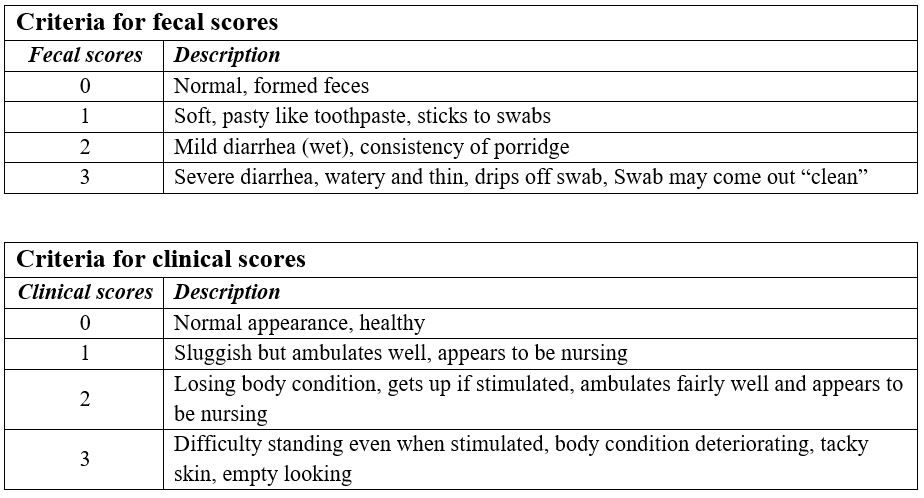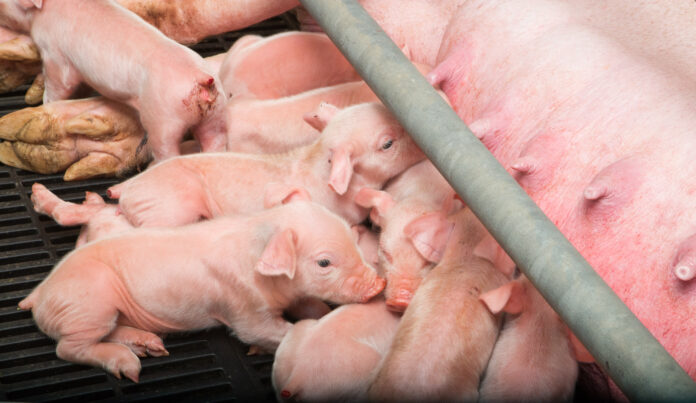By Andrew Heck

When porcine epidemic diarrhea (PED) broke for the first time ever in Alberta, in 2019, the province’s fears of its inevitable spread were confirmed. What was not clear – as in many disease outbreak investigations – is the source of how it arrived on-farm.
“Our disease surveillance program regularly tests for PED, among other viruses of concern,” said Javier Bahamon, Quality Assurance and Production Manager, Alberta Pork. “Before the outbreaks, and since, thousands upon thousands of tests have come back negative, which is a positive sign for our industry.”
Despite surveillance, and despite a lengthy investigation, Alberta’s four PED cases from 2019 remain a minor mystery. Could it have been a contaminated feed ingredient? Poor truck washing? An unintentional lapse in biosecurity? We may never know for sure, but we do know the virus can be present in manure. Is that manure capable of causing the virus to shed in piglets?
With PED flaring up in other parts of Canada, and as farmers turn to spreading manure on their crop fields as a way to offset high fertilizer prices, this question has become important to answer. Thanks to support from Swine Innovation Porc (SIP), Results Driven Agriculture Research (RDAR) and provincial funding partners, researchers at the University of Saskatchewan’s Vaccine and Infectious Disease Organization (VIDO) – led by Qiang Liu and supported by Colette Wheler, Trina Racine and Mingmin Liao – began looking for clues last year, and their findings are now helping to better inform Canada’s PED response.
Simulating barn conditions, for testing

The concern over manure stems from the idea that piglets are highly exposed to manure in the barn, and some of that is ingested. Additionally, when it comes to applying manure to fields, equipment used in the process can be considered fomites – transmission pathways – for the virus.
To find out if it is possible for piglets to shed PED virus after ingesting contaminated manure, three groups of newborn piglets were fed highly concentrated lagoon materials containing RNA of PED virus – a simplified genetic component – which was collected from infected lagoons by representatives from Alberta Pork and Alberta Agriculture, Forestry and Rural Economic Development. For this specific case study, the lagoon materials were necessarily gathered six-and-a-half months following the initial PED outbreaks in Alberta, which may have impacted results.
Using three commercially available pregnant sows from Prairie Swine Centre in Saskatoon, piglets were farrowed and immediately brought into the study. After being fed the lagoon materials, the piglets were observed for diarrhea and mortality over the course of a week, which could potentially indicate PED infection. For a deeper dive, fecal swabs were collected for daily analysis.
Following the trial, none of the piglets showed any abnormal clinical signs, though there was mild diarrhea observed in a few piglets. Diarrhea consistency trended toward the lower end of fecal scoring – toward “soft, pasty like toothpaste, sticks to swabs” – which would not be the case in the event of PED infection, where diarrhea should be seen at the higher, more severe end.
The mild diarrhea was gone after a couple of days, and the piglets completely recovered. Body weight gains were similar among piglets having diarrhea and piglets without diarrhea, further indicating that the diarrhea was not the result of PED but some other factor. Fecal swabs failed to yield any of the virus RNA at a detectable level as well.
In this specific case study, under the conditions in which the lagoon materials were gathered, the researchers concluded that the exposure of these animals to the infected material failed to produce infectivity or clinical signs of PED in the animals themselves. Other factors, it seems, are likely responsible for Alberta’s cases of PED in 2019.
Study results are positive, with caution

While the study’s supporters are pleased to have gained further insight into PED’s lack of infectivity in manure, with consideration given to the time period in which the study took place after the initial outbreaks, the important take-home message for producers is not to rest on their laurels when it comes to proper practices.
“We are happy with what the study’s findings, as this study provides a reference when dealing with contaminated manure,” said Bahamon. “However, producers are always advised to be vigilant when it comes to using manure from their operations, since there are still so many more unknowns out there, and we do not want to give anyone a false sense of security, especially in places where PED is an active problem.”
Given the limitations of the study, it cannot be absolutely confirmed that PED virus shedding in piglets is impossible when exposed to contaminated manure. Key factors include the length of time following an outbreak and the number of outbreaks in any given geographic area. These must be taken into account when it comes to evaluating the risk of spreading the disease, and a different level of risk may be observed when dealing with certain cases when other concerns come into play.
As the industry’s understanding of PED continues to improve, mitigating risks, the threat posed by PED remains ever-present. With time and further investigation, the hope is that the industry can further adapt to the realities of this virus, for the benefit of healthy hog production.




